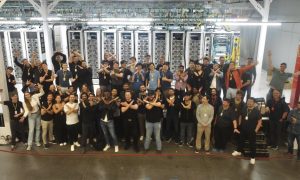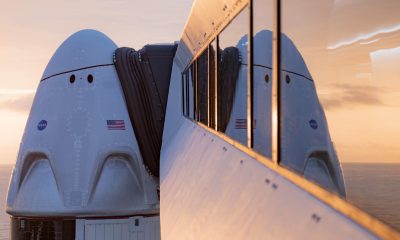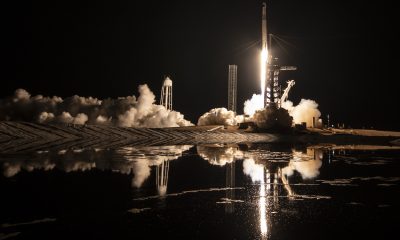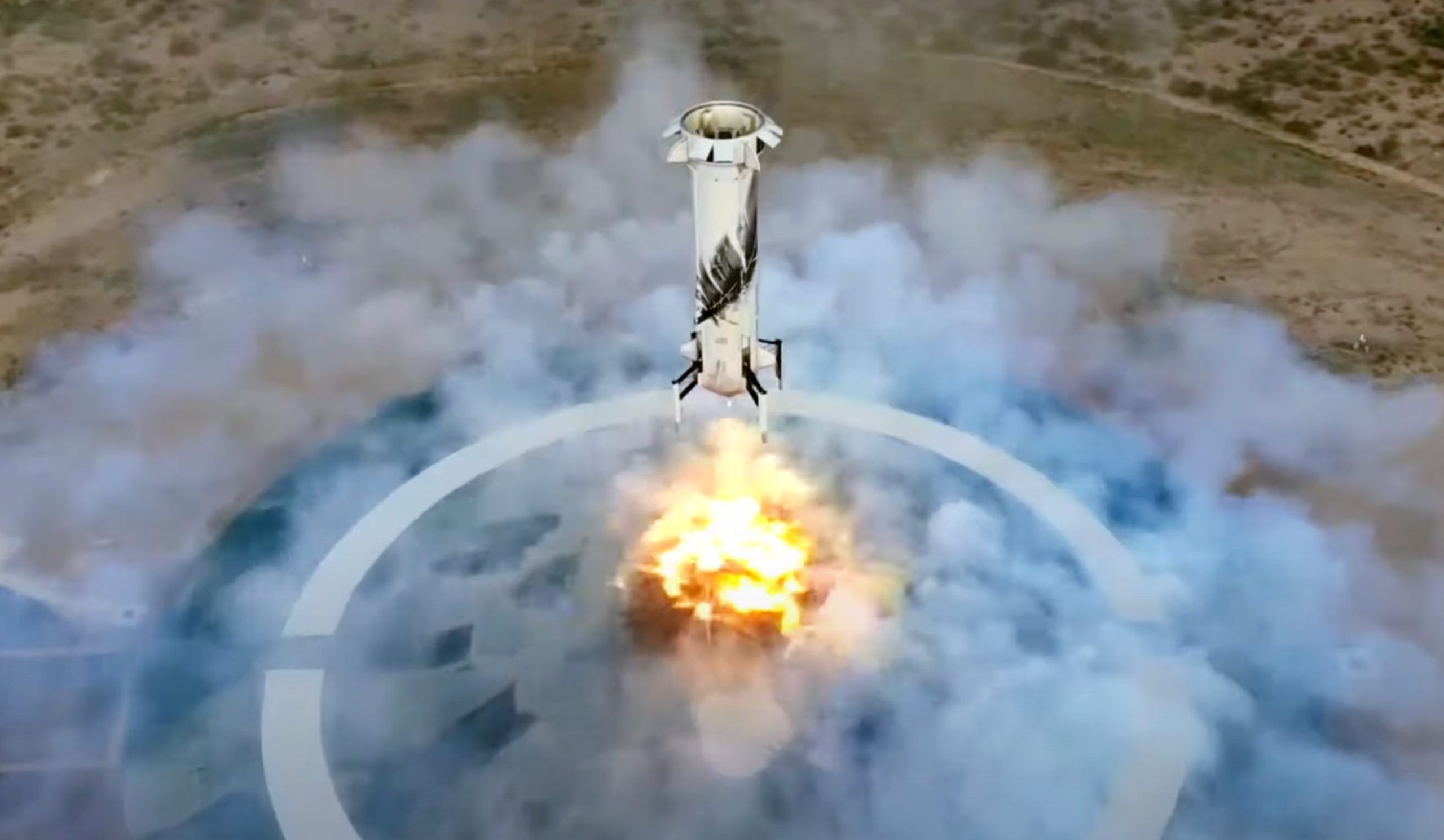

News
Blue Origin launches first suborbital tourists after six years and 15 test flights
More than six years after New Shepard’s first test flight and nine years after a pad abort featuring a prototype of the rocket’s capsule, Blue Origin has launched its first crew of suborbital tourists.
Almost exclusively funded by Amazon CEO Jeff Bezos’ stock sales over more than 21 years of operations, Blue Origin has been working towards New Shepard’s first crewed launch for approximately a decade. Aside from a pad abort test of the rocket’s relatively simple ‘crew capsule’ in October 2012, New Shepard – purported to be fully reusable – has performed 15 uncrewed test flights since April 2015. At least according to Blue Origin, of those 15 tests, 14 were fully successful and 11 crossed the 100 km (~62 mi) Karman Line – a largely arbitrary line drawn between Earth’s atmosphere and space.
Six years and three months after New Shepard’s first flight, the rocket lifted off on its 16th suborbital mission and inaugural crewed launch. Along for the ride were Jeff Bezos himself, brother Mark Bezos, hedgefund multimillionaire Joes Daemen’s son Oliver Daemen, and trailblazing pilot and aviator Mary “Wally” Funk.
While New Shepard NS-16 reached an apogee of 107 km (66 mi) and a maximum speed of 2233 mph (1 km/s / Mach 2.9), less than 13% of the way to orbit, the mission did mark a number of “spaceflight” firsts insofar as its passengers did technically spend between 70 and 150 seconds in “space.” Notably, NS-16 passengers Oliver Daemon and Wally Funk are now respectively the youngest and oldest people in history to reach space. While Blue Origin hasn’t disclosed the value of his second-place bid, Oliver Daemen was technically a paying customer, making New Shepard the first rocket in history to launch a paying passenger on its first crewed flight.
In June, Blue Origin held a tone-deaf auction that ultimately resulted in a mystery buyer winning the first ticket on New Shepard at a jaw-dropping cost of $28 million – just shy of the $30M Richard Garriott paid to ride a Soyuz rocket to space, spend almost two weeks in orbit, and scream back to Earth at Mach 25. Bizarrely, the company still hasn’t revealed the winner, at no point mentioned that there would be runners-up, inexplicably swapped the mystery winner for Oliver Daemen with “scheduling issues” as the comical excuse, and has yet to reveal what Daemen paid for his ticket. In general, Blue Origin still refuses to provide any information about the price of seats on New Shepard.
Meanwhile, although Blue Origin did provide invite-only access to some media outlets and offered numerous interview opportunities with the NS-16 crew, there have been virtually zero chances for reporters and journalists to ask real questions. Beyond New Shepard, which raises dozens of questions on its own, Blue Origin’s orbital New Glenn rocket is years behind schedule and apparent issues with the BE-4 engine meant to power both it and the United Launch Alliance’s (ULA) Vulcan has also significantly delayed the latter rocket’s launch debut.
For the last several years, Vulcan and New Glenn were both aiming for a launch debut sometime in 2020. Both targets eventually slipped to 2021 and as of 2021, Vulcan is now expected to launch no earlier than early 2022 and New Glenn’s debut has slipped to “late 2022” – likely meaning 2023.
On its own, New Shepard has had one of the most bizarre development paths of any rocket in history. Despite virtually unlimited resources from Bezos’ average sale of billions of Amazon stock each year and the fact that New Shepard is a fully reusable rocket that demonstrated the ability to fly twice in ~60 days in 2016, Blue Origin has only launched the rocket 15 times in the 75 months before NS-16. The company has never once implied that New Shepard suffered major issues during any of its test flights, save for NS-1’s failed booster recovery (though Blue has generally glossed over or ignored that lone failure).
Somewhat coincidentally, New Shepard’s first test flight occurred just a few weeks before SpaceX attempted the first major test of a partially integrated Crew Dragon prototype, resulting in a successful pad abort test in May 2015. Despite several significant, documented delays, less than four years later, Crew Dragon aced an uncrewed orbital launch to the ISS and back to Earth. 14 months after Demo-1, SpaceX became the first private company in history to launch astronauts to orbit. Less than six months after that historic launch and four months after Crew Dragon returned two NASA astronauts to Earth, SpaceX launched its first operational four-astronaut mission to the ISS.
In the same period that Blue Origin completed five uncrewed New Shepard test flights, SpaceX launched Crew Dragon’s Demo-1, In-Flight Abort, Demo-2, Crew-1, and Crew-2 missions, carrying six astronauts to orbit and back and delivering another four to the ISS (where they still are). Not only did SpaceX also launch five Crew Dragons, but April 2021’s Crew-2 mission marked the first time in history that astronauts launched on a flight-proven liquid rocket booster and a flight-proven space capsule, beating Blue Origin to the punch despite the far greater challenges and risks posed by orbital spaceflight.
Put simply, it’s disappointing but not exactly surprising that Blue Origin continues to go to great lengths to avoid having to answer questions that haven’t been obviously vetted or preselected.
News
Tesla launches in India with Model Y, showing pricing will be biggest challenge
Tesla finally got its Model Y launched in India, but it will surely come at a price for consumers.
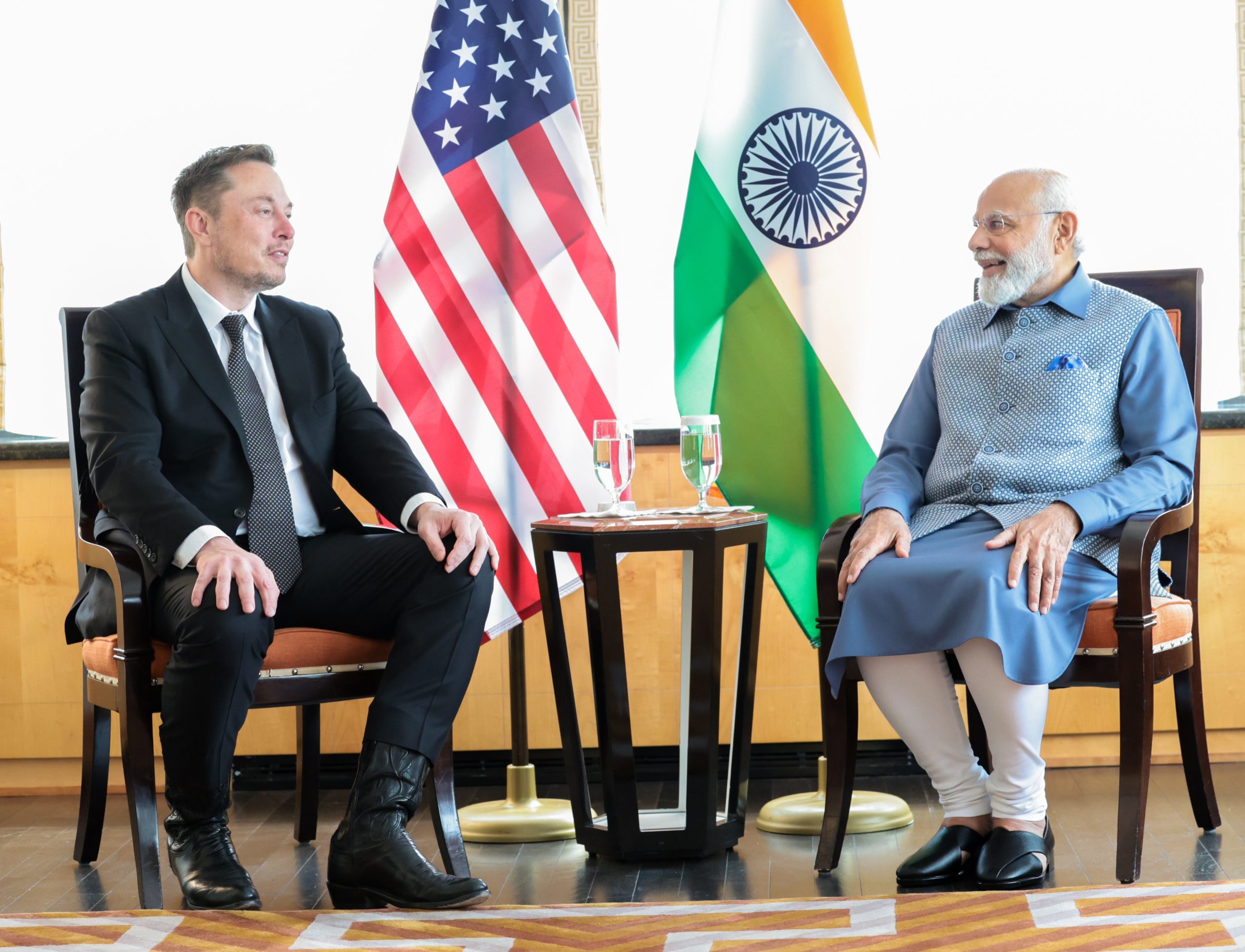
Tesla has officially launched in India following years of delays, as it brought its Model Y to the market for the first time on Tuesday.
However, the launch showed that pricing is going to be its biggest challenge. The all-electric Model Y is priced significantly higher than in other major markets in which Tesla operates.
On Tuesday, Tesla’s Model Y went up for sale for 59,89,000 rupees for the Rear-Wheel Drive configuration, while the Long Range Rear-Wheel Drive was priced at 67,89,000.
This equates to $69,686 for the RWD and $78,994 for the Long Range RWD, a substantial markup compared to what these cars sell for in the United States.
🚨 Here’s the difference in price for the Tesla Model Y in the U.S. compared to India.
🚨 59,89,000 is $69,686
🚨 67,89,000 is $78,994 pic.twitter.com/7EUzyWLcED— TESLARATI (@Teslarati) July 15, 2025
Deliveries are currently scheduled for the third quarter, and it will be interesting to see how many units they can sell in the market at this price point.
The price includes tariffs and additional fees that are applied by the Indian government, which has aimed to work with foreign automakers to come to terms on lower duties that increase vehicle cost.
Tesla Model Y seen testing under wraps in India ahead of launch
There is a chance that these duties will be removed, which would create a more stable and affordable pricing model for Tesla in the future. President Trump and Indian Prime Minister Narendra Modi continue to iron out those details.
Maharashtra Chief Minister Devendra Fadnavis said to reporters outside the company’s new outlet in the region (via Reuters):
“In the future, we wish to see R&D and manufacturing done in India, and I am sure at an appropriate stage, Tesla will think about it.”
It appears to be eerily similar to the same “game of chicken” Tesla played with Indian government officials for the past few years. Tesla has always wanted to enter India, but was unable to do so due to these import duties.
India wanted Tesla to commit to building a Gigafactory in the country, but Tesla wanted to test demand first.
It seems this could be that demand test, and the duties are going to have a significant impact on what demand will actually be.
Elon Musk
Tesla ups Robotaxi fare price to another comical figure with service area expansion
Tesla upped its fare price for a Robotaxi ride from $4.20 to, you guessed it, $6.90.

Tesla has upped its fare price for the Robotaxi platform in Austin for the first time since its launch on June 22. The increase came on the same day that Tesla expanded its Service Area for the Robotaxi ride-hailing service, offering rides to a broader portion of the city.
The price is up from $4.20, a figure that many Tesla fans will find amusing, considering CEO Elon Musk has used that number, as well as ’69,’ as a light-hearted attempt at comedy over the past several years.
Musk confirmed yesterday that Tesla would up the price per ride from that $4.20 point to $6.90. Are we really surprised that is what the company decided on, as the expansion of the Service Area also took effect on Monday?
But the price is now a princely $6.90, as foretold in the prophecy 😂
— Elon Musk (@elonmusk) July 14, 2025
The Service Area expansion was also somewhat of a joke too, especially considering the shape of the new region where the driverless service can travel.
I wrote yesterday about how it might be funny, but in reality, it is more of a message to competitors that Tesla can expand in Austin wherever it wants at any time.
Tesla’s Robotaxi expansion wasn’t a joke, it was a warning to competitors
It was only a matter of time before the Robotaxi platform would subject riders to a higher, flat fee for a ride. This is primarily due to two reasons: the size of the access program is increasing, and, more importantly, the service area is expanding in size.
Tesla has already surpassed Waymo in Austin in terms of its service area, which is roughly five square miles larger. Waymo launched driverless rides to the public back in March, while Tesla’s just became available to a small group in June. Tesla has already expanded it, allowing new members to hail a ride from a driverless Model Y nearly every day.
The Robotaxi app is also becoming more robust as Tesla is adding new features with updates. It has already been updated on two occasions, with the most recent improvements being rolled out yesterday.
Tesla updates Robotaxi app with several big changes, including wider service area
News
Tesla Model Y and Model 3 dominate U.S. EV sales despite headwinds
Tesla’s two mainstream vehicles accounted for more than 40% of all EVs sold in the United States in Q2 2025.
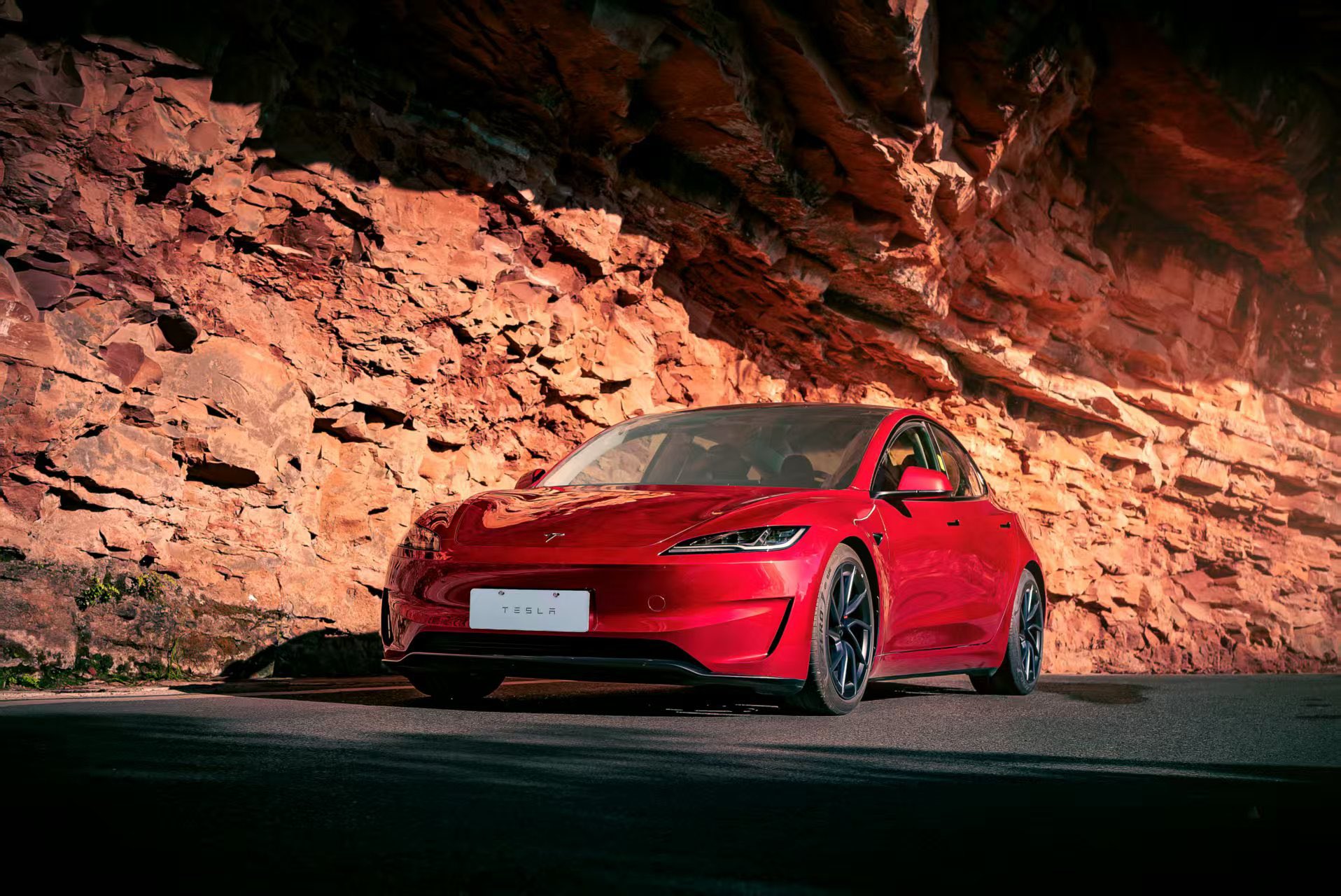
Tesla’s Model Y and Model 3 remained the top-selling electric vehicles in the U.S. during Q2 2025, even as the broader EV market dipped 6.3% year-over-year.
The Model Y logged 86,120 units sold, followed by the Model 3 at 48,803. This means that Tesla’s two mainstream vehicles accounted for 43% of all EVs sold in the United States during the second quarter, as per data from Cox Automotive.
Tesla leads amid tax credit uncertainty and a tough first half
Tesla’s performance in Q2 is notable given a series of hurdles earlier in the year. The company temporarily paused Model Y deliveries in Q1 as it transitioned to the production of the new Model Y, and its retail presence was hit by protests and vandalism tied to political backlash against CEO Elon Musk. The fallout carried into Q2, yet Tesla’s two mass-market vehicles still outsold the next eight EVs combined.
Q2 marked just the third-ever YoY decline in quarterly EV sales, totaling 310,839 units. Electric vehicle sales, however, were still up 4.9% from Q1 and reached a record 607,089 units in the first half of 2025. Analysts also expect a surge in Q3 as buyers rush to qualify for federal EV tax credits before they expire on October 1, Cox Automotive noted in a post.
Legacy rivals gain ground, but Tesla holds its commanding lead
General Motors more than doubled its EV volume in the first half of 2025, selling over 78,000 units and boosting its EV market share to 12.9%. Chevrolet became the second-best-selling EV brand, pushing GM past Ford and Hyundai. Tesla, however, still retained a commanding 44.7% electric vehicle market share despite a 12% drop in in Q2 revenue, following a decline of almost 9% in Q1.
Incentives reached record highs in Q2, averaging 14.8% of transaction prices, roughly $8,500 per vehicle. As government support winds down, the used EV market is also gaining momentum, with over 100,000 used EVs sold in Q2.
Q2 2025 Kelley Blue Book EV Sales Report by Simon Alvarez on Scribd
-

 News3 days ago
News3 days agoTesla debuts hands-free Grok AI with update 2025.26: What you need to know
-

 Elon Musk6 days ago
Elon Musk6 days agoxAI launches Grok 4 with new $300/month SuperGrok Heavy subscription
-

 Elon Musk1 week ago
Elon Musk1 week agoElon Musk confirms Grok 4 launch on July 9 with livestream event
-

 News2 weeks ago
News2 weeks agoTesla Model 3 ranks as the safest new car in Europe for 2025, per Euro NCAP tests
-

 Elon Musk2 weeks ago
Elon Musk2 weeks agoxAI’s Memphis data center receives air permit despite community criticism
-

 News5 days ago
News5 days agoTesla begins Robotaxi certification push in Arizona: report
-
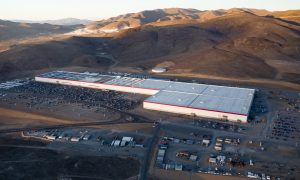
 Elon Musk2 weeks ago
Elon Musk2 weeks agoTesla reveals it is using AI to make factories more sustainable: here’s how
-

 Elon Musk2 weeks ago
Elon Musk2 weeks agoTesla scrambles after Musk sidekick exit, CEO takes over sales


